- Home
- slideshows
- miscellaneous
- The best bushcraft and survival knives you can buy
The best bushcraft and survival knives you can buy
The best survival knife overall

The best budget survival knife
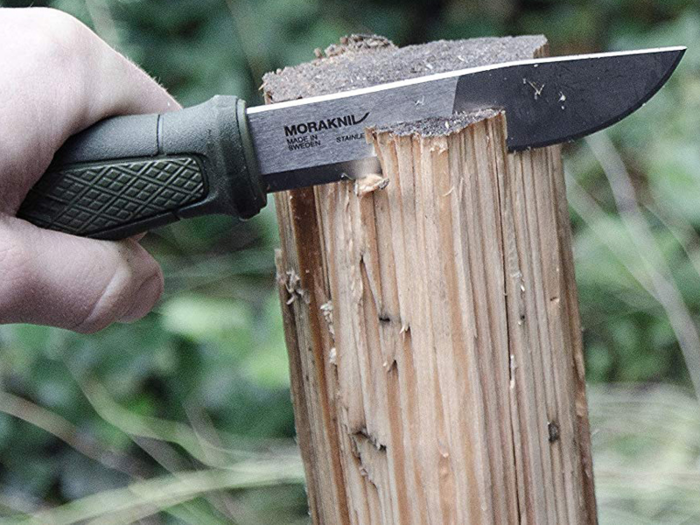
Hailing from Sweden, Morakniv is another icon among knifemakers. Like Japan, Sweden has a history of blade-crafting that dates back over a millennium, from the legendary Ulfberht Viking swords to the no-nonsense bushcraft knives still made there today.
Few knives encapsulate this utilitarian design ethos better than the great, affordable Morakniv Kansbol.
Morakniv is particularly well-known for its budget-friendly yet sturdy stainless steel fieldcraft blades, and this company has done a lot to dispel the notion that stainless steel knives are cheap junk — a reputation unfairly earned due to the sea of low-quality Chinese-made novelty knives floating around.
While most “hard use" blades are made of carbon steel, corrosion-resistant stainless steel has some clear advantages in the wilderness where conditions can quickly become wet and muddy.
True bushcraft knives are typically medium-sized tools with blades sitting at around 4 to 5 inches. Mora knives are exactly what many experienced outdoorsmen and adventurers envision when they hear the term "bushcraft."
The 4-inch blade is expertly engineered for tasks like cutting and slicing, which is what you’re going to need a knife for most of the time (think food prep, sharpening stakes, making feather sticks or wood shavings for starting fires, and so on).
Blades like the Kansbol aren’t made for heavier tasks like chopping or batoning wood. It’s not meant to be, but the trade-off is that this knife is much lighter with a considerably smaller footprint in your loadout than something like the hefty Esee 5 or the super-beefy Becker BK9.
And along with its Swedish pedigree, great stainless steel, sturdy sheath, light weight, and no-frills bushcraft design, our favorite thing about the Morakniv Kansbol is its unbeatable value: For only $32, you’re getting a lot of knife for your money, and one which you’ll be glad to have on your hip when you’re miles away from civilization.
Pros: Made in Sweden, lightweight and utilitarian size for bushcrafting/backpacking, sturdy plastic scabbard that retains the knife well, stainless steel is resistant to rust and corrosion, and the blade geometry is great for cutting and slicing tasks
Cons: Not a true full-tang design, and the blade is too short and thin for “big knife" jobs
Buy the Morakniv Kansbol on Amazon for $33.06The best all-purpose survival knife
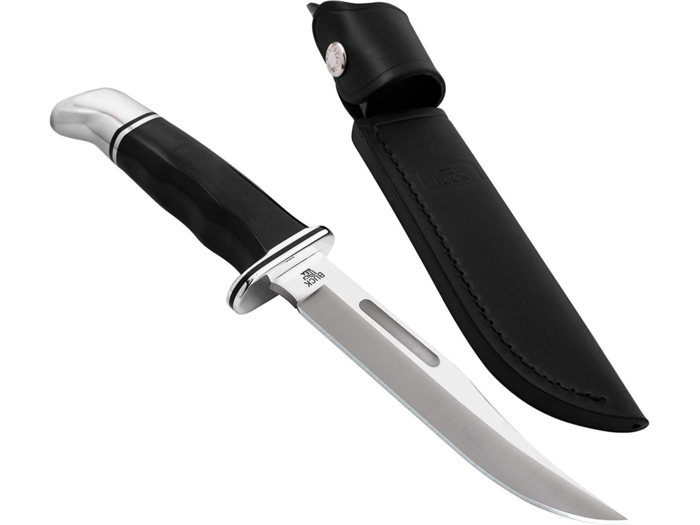
Adherents to the "big knife" school of thought argue that big knives are more versatile tools. While heavier than your typical 4-to-7-inch field blades, a large knife actually lets you shave some weight off of your loadout as it can perform a number of tasks that typically require bulkier tools. A large knife can chop, process firewood, and perform other such tasks well, precluding the need to carry additional instruments like folding saws or hatchets.
This argument has its merits, enough so that we've included one big knife on our roundup: The famous Becker BK9. Designed by blade-maker Ethan Becker and manufactured in the US by Ka-Bar, the BK9 has become one of the chief icons of the big knife community owing to its great design, extreme ruggedness, and serious chopping power.
Crafted of Ka-Bar's excellent 1095 Cro-Van steel, the Becker BK9 sports a 9-inch full tang blade that comes to a flat clip point. Some users might prefer a drop point, but the flat clip point of the BK9 is short and not curved, so it's very sturdy with a tip that isn't too aggressively pointy or fragile. The 9-inch blade is also well into "big" territory without being overkill as some other large knives that sport 11-, 12-, or even 13-inch blades.
As mentioned in the Esee 5 review when comparing that knife to the Ka-Bar BK2, Becker knives typically don't come with great handles or sheaths. The BK9's grips are no exception, being made of plastic Ka-Bar calls "Grivory" (a fancy name for polymer) that can get slippery when wet.
The nylon sheath isn't quite as rugged as kydex, either, but it gets the job done and has a kydex insert which keeps the blade secure — although many owners opt to replace it with a custom sheath from one of the myriad of online sheath-makers.
More than a few BK9 owners also buy Micarta replacement grips, although a cheaper solution is to grab some grip tape to wrap the Grivory scales, which greatly improves the knife's handling in wet conditions. Despite these cut corners, however, the Becker BK9 is a supremely solid knife for anyone who's a fan of big blades, and at around $90 to $100, it's a good value for a US-made tool of this caliber and versatility.
Pros: Made in the USA, built like a tank, good handle ergonomics, solid blade geometry, and a great overall design for a big knife that's not so large as to be unwieldy
Cons: Plastic "Grivory" grip can get slippery when wet, and the nylon sheath is functional but not as good as molded kydex
Buy the Becker BK9 on Amazon with a black grip for $44.78 or a wood grip for $99.97The best big survival knife
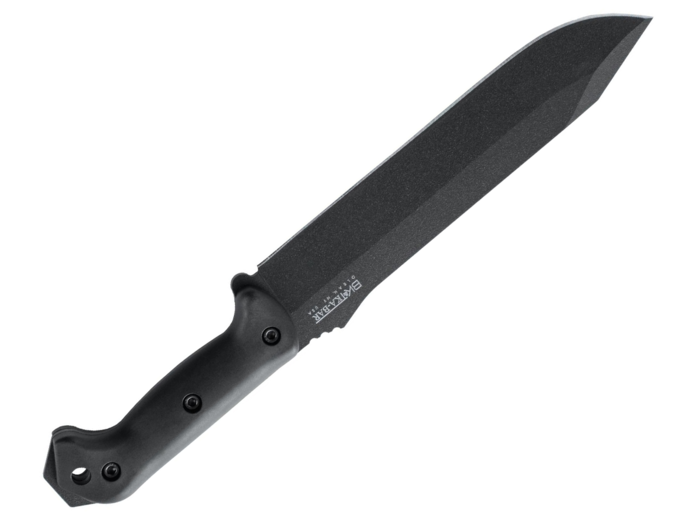
Modern bushcraft knives typically follow the same design pattern: A 4-to-5-inch drop point blade, Micarta grip scales, no crossguard, and an exposed full tang. But sometimes the old things are the best things, and traditional knife designs like the time-tested Buck 119 Special remain hugely popular among outdoorsmen for a reason.
When you take a look at the Buck Special, you're probably reminded of the sort of knife your grandpa might have had on his hip when hunting or fishing. It's got a traditionally shaped grip with a metal pommel and crossguard to protect your fingers, its 6-inch stainless steel blade terminates in an intense beak-like clip point, and it's hair-popping sharp out of the box.
You can hunt, skin, and even defend yourself with this knife, so although it might not boast the design features and high-end steels found in modern bushcraft knives, it's this great old-school design that lends the Buck Special its all-around versatility and appeal.
The smooth handle can get slippery when wet or bloody, though — hence the crossguard to keep your fingers from sliding up onto the blade — but this is easily fixed if you find it to be a problem.
Like Morakniv, Buck is another knife-maker that specializes in stainless steels for its blades. The 420HC steel that Buck uses isn't going to win any awards, but it's easy to sharpen, keeps its edge well, and is as corrosion resistant as you'd want stainless steel to be in wet environments.
Buck knives are priced right, too: The 119 rings in at around $60, and you get a nice thick leather sheath — an incredible value for a rugged and gift-worthy American legend.
Pros: Its 6-inch blade and traditional design make it an ideal "all-purpose" field knife, made in the U.S. of good stainless steel, comes with a nice thick leather sheath, backed by Buck's lifetime warranty, and it's an excellent value for an American-made survival knife
Cons: The smooth handle can get slippery, and the clip-point tip isn't quite as robust as drop-point blades
Buy the Buck 119 Special on Walmart for $97.95The best high-end survival knife
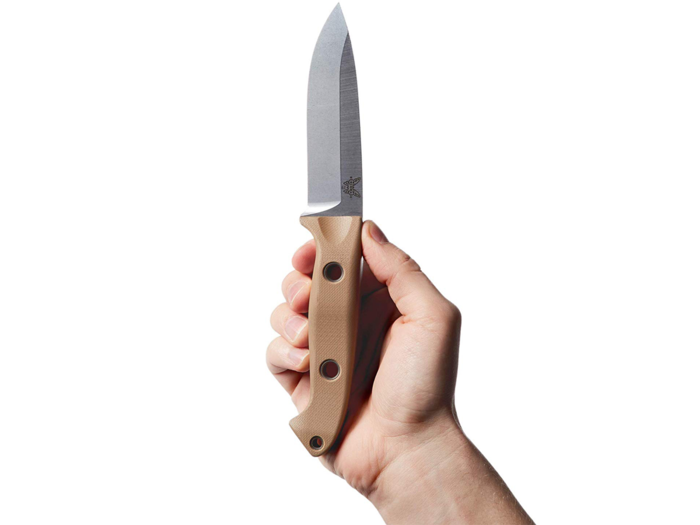
If you're at all acquainted with knives, then you've at least heard of Benchmade. For more than three decades, this all-American company's blades have been coveted by knife enthusiasts, outdoorsmen, law enforcement and military personnel, and just about anybody else who wants the best and is willing to pay for it.
These excellent knives remain hugely popular for hunting, tactical, and everyday carry applications, and for when it comes to high-end survival blades, the Benchmade 162 Bushcrafter is nearly perfect.
In stark contrast to the old-school Buck 119, the Bushcrafter completes the full checklist of modern survival knife features: Its 4.4-inch blade comes to a sturdy drop point at the tip, the knife is made from 0.164-inch thick steel stock with a full exposed tang, and the tang itself is sandwiched between two grip scales.
They're not Micarta, however. For the Bushcrafter, Benchmade used resin-coated G10 fiberglass, which stands up to moisture and blood better than cloth-derived Micarta while still providing a rough, grippy surface that won't slip around in a wet hand.
As it's not as thick or nearly as large as the Esee 5, the Bushcrafter is considerably lighter: With an overall length of 9.15 inches and a weight of just 7.7 ounces unsheathed, the Benchmade 162 is a more carry-friendly field knife (while still being built like a tank) for those looking to run a lighter load.
Its CPM-S30V stainless steel also ranks among the best, with excellent sharpening and edge retention capabilities plus superior corrosion resistance to more common carbon steels.
The Bushcrafter comes in two flavors, each with different handle colors and sheaths: One with blue/green G10 scales with red liners and a tan leather sheath, the other with tan-colored G10 grips and a black kydex sheath. Although the first is more visually striking, kydex is generally accepted as the best sheath material, especially for wet and rugged conditions where leather is not ideal — but the choice here should come down to your own preferences.
The Bushcrafter is admittedly expensive at $200, owing to its premium S30V steel and superb level of craftsmanship. But this brand didn't become a legend in the knife world by hawking overpriced wares. When you're buying a Benchmade, you can be sure you're getting a hard-use American-made tool that'll outlast you, and the Bushcrafter is the one to get if you're looking for what may be the best modern survival blade that money can buy.
Pros: Full-tang drop-point blade that's purpose-made for field survival, made of excellent CPM-S30V carbon steel, is the perfect size for a bushcrafting knife, grippy and moisture-resistant G10 handle scales, and it's backed by Benchmade's lifetime warranty
Cons: It's expensive
Buy the Benchmade 162 Bushcrafter on Amazon for $199.75How to choose the right survival knife for your needs
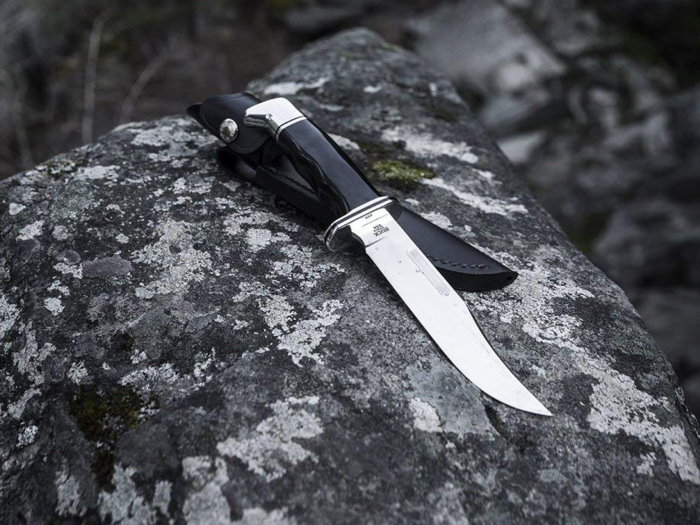
Hunting down the right bushcraft knife can be a time-consuming process, to be sure. You can spend hours learning about different knife designs, steel types, blade geometries, and so on when shopping for a survival knife — but to save you some time, here's a quick and dirty survival knife buying guide to get you started:
Blade sizePeople have strong opinions about blade size, but as a general guideline, the sweet spot for a survival/bushcrafting knife is 4 to 5 inches ( 6 to 7 inches is also acceptable for a general-purpose blade). Some survivalists and outdoorsmen subscribe to the "big knife" school of thought, as you can get a lot more done with a large blade, reducing redundancy among the other tools you're carrying.
Whatever size of survival knife you choose to carry into the wild, it's best to go with a blade that's at least 4 inches long. Any shorter and it'll be too small for many tasks. Also, consider that it will always be easier to perform small tasks with a bigger blade than it is to tackle big jobs with one that’s too small.
Blade geometry"Blade geometry" refers to the general shape of a knife's blade. As different knives are built for different tasks, there's no "one size fits all" blade shape even for rather specific niches like bushcrafting. Drop points and clip points are the styles you'll see the most among modern knives made for survival knives owing to their time-tested versatility.
Drop point blades are the most favored among survivalists, as the tip is more durable than that of a clip point (which comes to a sharper tip, thus making it more likely to break) and stands up well to rough use, but the sharp end of a clip point has some advantages of its own. Bushcrafting knives should also feature a robust grind that will leave the blade less susceptible to chipping or cracking along the edge.
MaterialsYou can spend hours and hours learning about different blade steels before even approaching other design considerations. To keep it very brief, steels are divided into two main camps: stainless, which is more resistant to corrosion but typically softer, and carbon, which is less rust-resistant but holds an edge better.
The ideal hardness for a survival blade on the Rockwell scale is 58-60 HRC. Too soft and the knife will be tricky to sharpen properly and won't hold an edge well; too hard and the blade will be brittle and prone to breakage.
Stainless had a bad reputation years ago (mostly due to poor steels that you typically find on cheaply made knives), but some companies like Buck and Morakniv make very good stainless blades today. The most common carbon steel you'll see is 1095 owing to its ease of manufacturing, low cost, good edge retention, and durability when properly heat-treated. Other carbon tool steels, like A2, D2, and CPM-S30V, may have better properties (superior edge retention, corrosion resistance, etc.) than 1095, but are pricier.
Grip material is also important. Many users today, myself included, favor Micarta (made from compressed layers of linen, cotton, or paper), as its rough surface texture provides excellent purchase on the handle even when your hands are slick with sweat, water, grease, or blood. Leather and polymer handles are also rather common, but generally inferior to Micarta in both grip and durability, although there are ways to improve these shortcomings.
OriginKnives are manufactured all over the world, but for a knife that you may end up having to rely on to survive, we strongly recommend sticking with qualified and well-known blade-makers in the US, Europe, and Japan. You typically don't have to pay out the nose for one of these blades, either. Stay away from the ocean of cheaply made junk from no-name brands (often made from low-quality stainless steels with poor heat treatments to match) that litters the internet.
That's not to say that all knives that come from China are poor quality, but as a general rule, the best blade-smiths in the world are located in America, Europe, and Japan — places with long traditions of quality smithing. Although our own picks are made in America and Europe, there are also some very solid blades coming out of countries like El Salvador (Condor), Brazil (Tramontina), and Taiwan (many of Cold Steel's offerings).
Popular Right Now
Popular Keywords
Advertisement